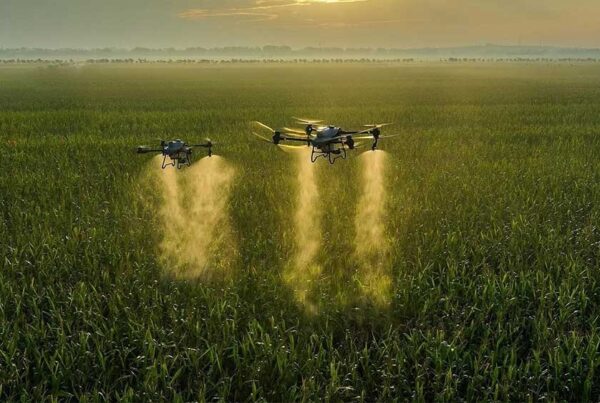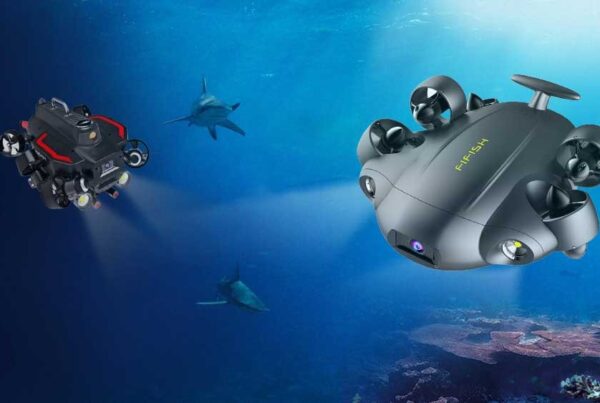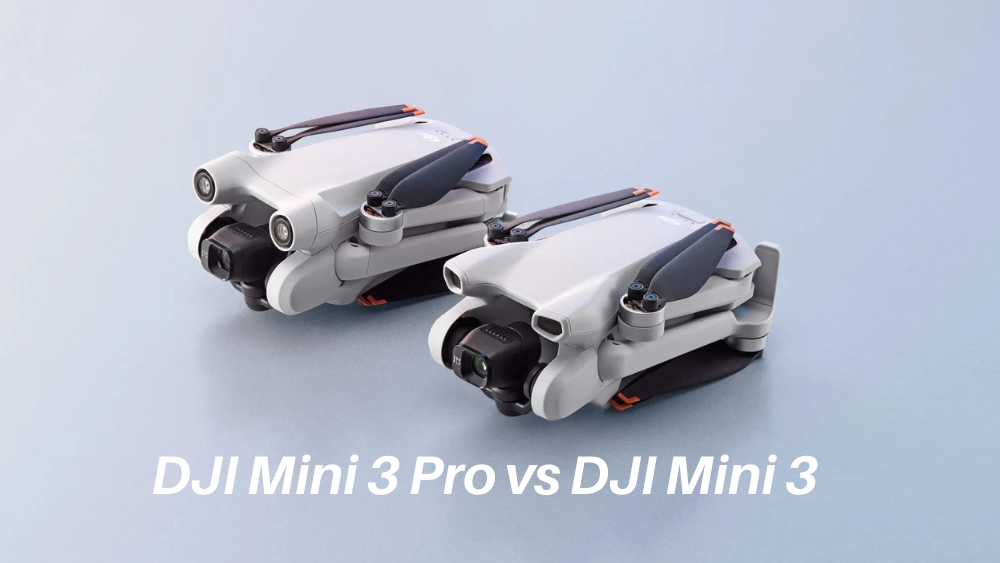

Introduction
As a long-time drone enthusiast, I’ve flown everything from bulky professional rigs to sleek consumer models that fit in the palm of my hand. The thrill of sending a camera soaring into the skies, capturing breathtaking views from above, never gets old. Today, I’m diving deep into two of the most talked-about drones in the consumer market: the DJI Mini 3 Pro and the DJI Mini 3. Both drones promise portability without sacrificing performance, but how do they really stack up against each other? From design nuances to flight performance, I’ll share my hands-on experience to help you decide which drone might be your next aerial companion.
Design and Build
On the surface, the DJI Mini 3 Pro and DJI Mini 3 share a family resemblance, but the devil is in the details. The Mini 3 Pro boasts an aerodynamic design with a slightly larger body to accommodate its enhanced features. Despite this, it remains surprisingly portable, easily fitting into a small backpack or side pocket of a camera bag. The Mini 3, on the other hand, follows the footsteps of its predecessor, maintaining a compact and lightweight design that’s ideal for the casual flyer.
One of the first things I noticed was the difference in weight. The Mini 3 Pro edges just under the 250g mark, a critical weight class that exempts it from many drone regulations. The Mini 3 also stays under this limit, making both drones appealing for travel. However, the Mini 3 Pro’s slightly heavier build feels more robust in hand, suggesting a better resilience against the occasional bump or scrape.
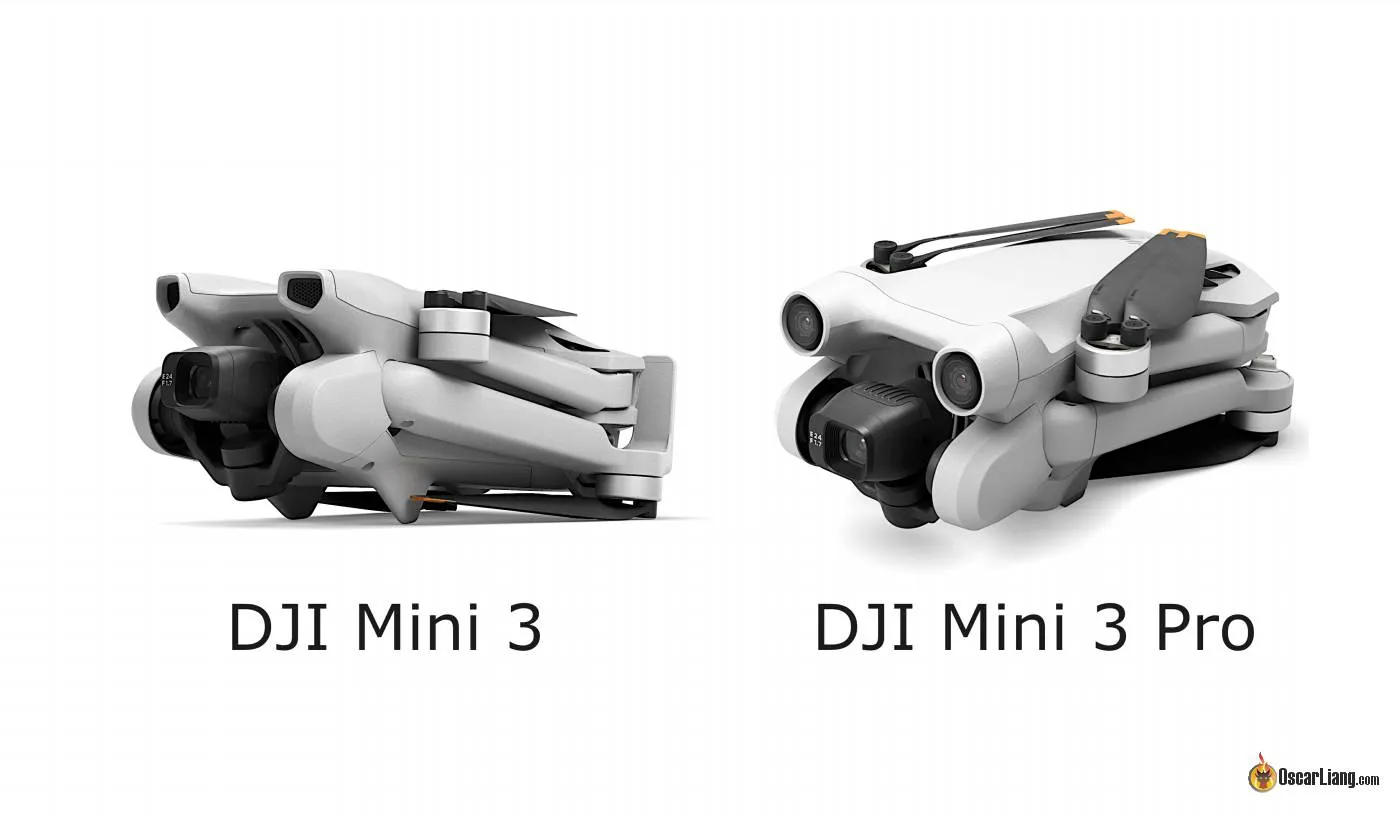

Camera Capabilities
When it comes to drone photography and videography, the camera is the heart of the operation. The DJI Mini 3 Pro and the Mini 3, while similar at a glance, cater to slightly different audiences with their camera specs.
The DJI Mini 3 Pro features a larger sensor size than the Mini 3, which is immediately noticeable in low-light conditions. With its 1/1.3″ sensor and dual native ISO, the Mini 3 Pro captures rich details and vibrant colors, even as the sun dips below the horizon. Its ability to shoot in 4K at 60 frames per second allows me to capture smooth, high-resolution video, ensuring that fast-moving scenes are beautifully rendered. The adjustable aperture is a boon for controlling exposure, offering flexibility that I appreciate when shooting in varying light conditions.
On the other hand, the DJI Mini 3 is no slouch. Its camera also supports 4K video, but at a max of 30 frames per second. While the difference may not be noticeable to all, it limits the capacity for slow-motion footage. The fixed aperture means a bit more work in post-production to balance exposure, especially in fluctuating lighting. However, for the everyday enthusiast and casual content creator, the Mini 3’s camera offers a fantastic balance of quality and ease of use.
Real-life scenario: During a trip to the coast, the Mini 3 Pro’s higher frame rate and better low-light performance allowed me to capture the dynamic and dimly lit landscapes of dusk with stunning clarity. In contrast, while using the Mini 3 at a family picnic on a sunny day, the footage was vibrant and crisp, perfectly capturing the moment without the need for the extra features of the Pro model.
Flight Performance
Flight performance is where the DJI Mini 3 Pro really begins to differentiate itself from its sibling. With a max flight time of up to 34 minutes compared to the Mini 3’s 30 minutes, those extra minutes can be crucial when trying to capture the perfect shot. Moreover, the Mini 3 Pro handles wind resistance better thanks to its slightly heftier build and improved motor efficiency. This means smoother footage and more reliable control in less-than-ideal conditions.
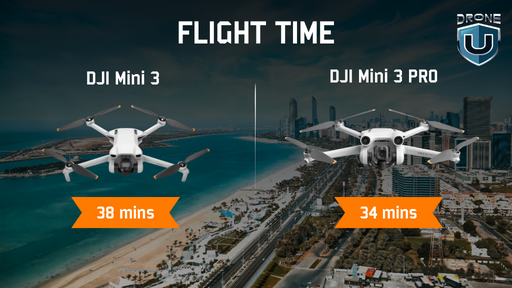
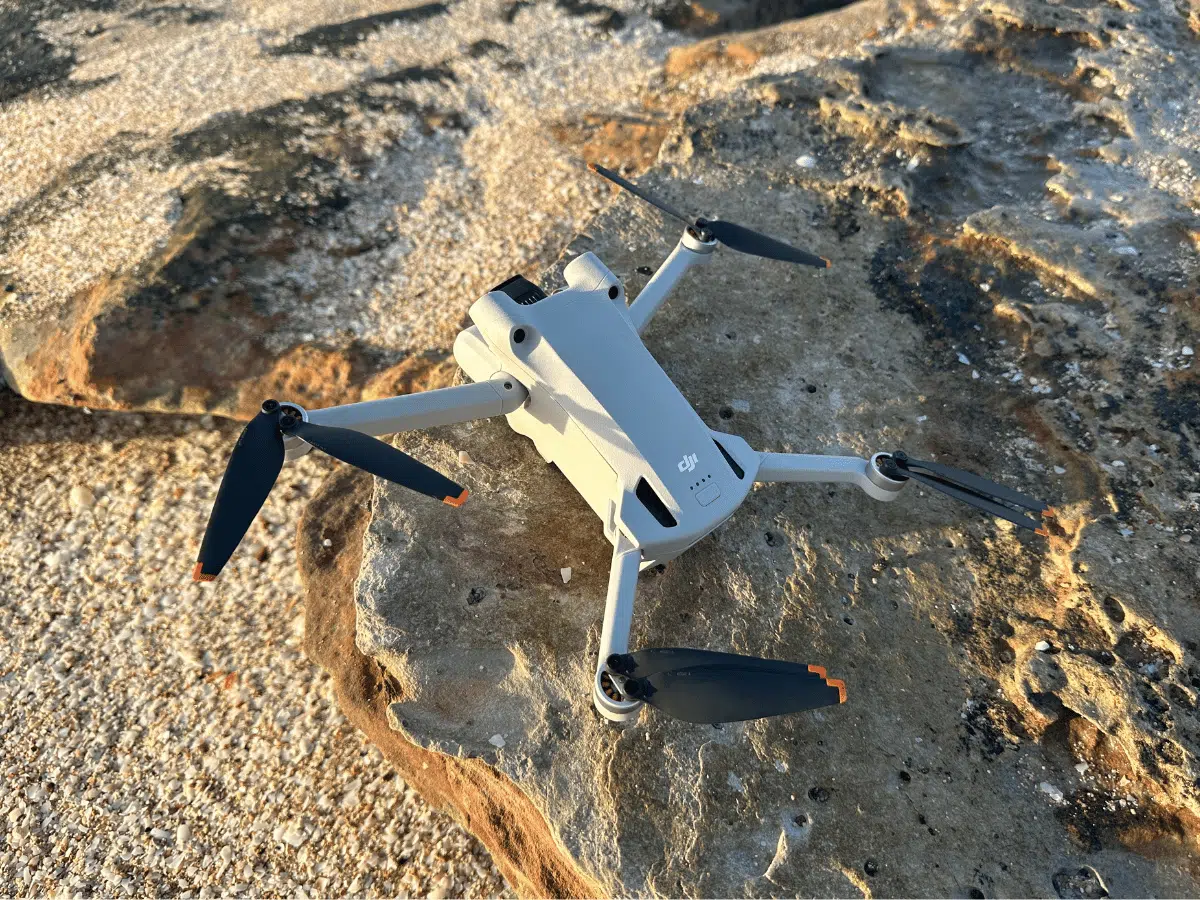
Both drones offer excellent range, with the ability to fly up to 12 kilometers away from the controller. However, in my experience, the Mini 3 Pro maintains a stronger signal in crowded urban environments, likely due to its enhanced transmission system.
Real-life scenario: Flying over a local festival, the Mini 3 Pro’s extended flight time and stability in the breeze allowed me to capture the entire event without needing to land for a battery change. Meanwhile, the Mini 3, used during a calm day in the park, offered more than enough performance for leisurely flights and casual photography.
Additional Features and Usability
Both drones come packed with features designed to enhance the flying experience. The DJI Mini 3 Pro, with its obstacle sensing technology, provides peace of mind when navigating tricky environments. The focus track feature is incredibly useful for dynamic shots, automatically keeping the subject in frame while you focus on piloting.
The Mini 3, while lacking some of the Pro’s advanced features, offers an intuitive and streamlined flying experience. Its simplicity is a virtue, making it an excellent choice for those new to drone flying or those who prefer a more straightforward approach.
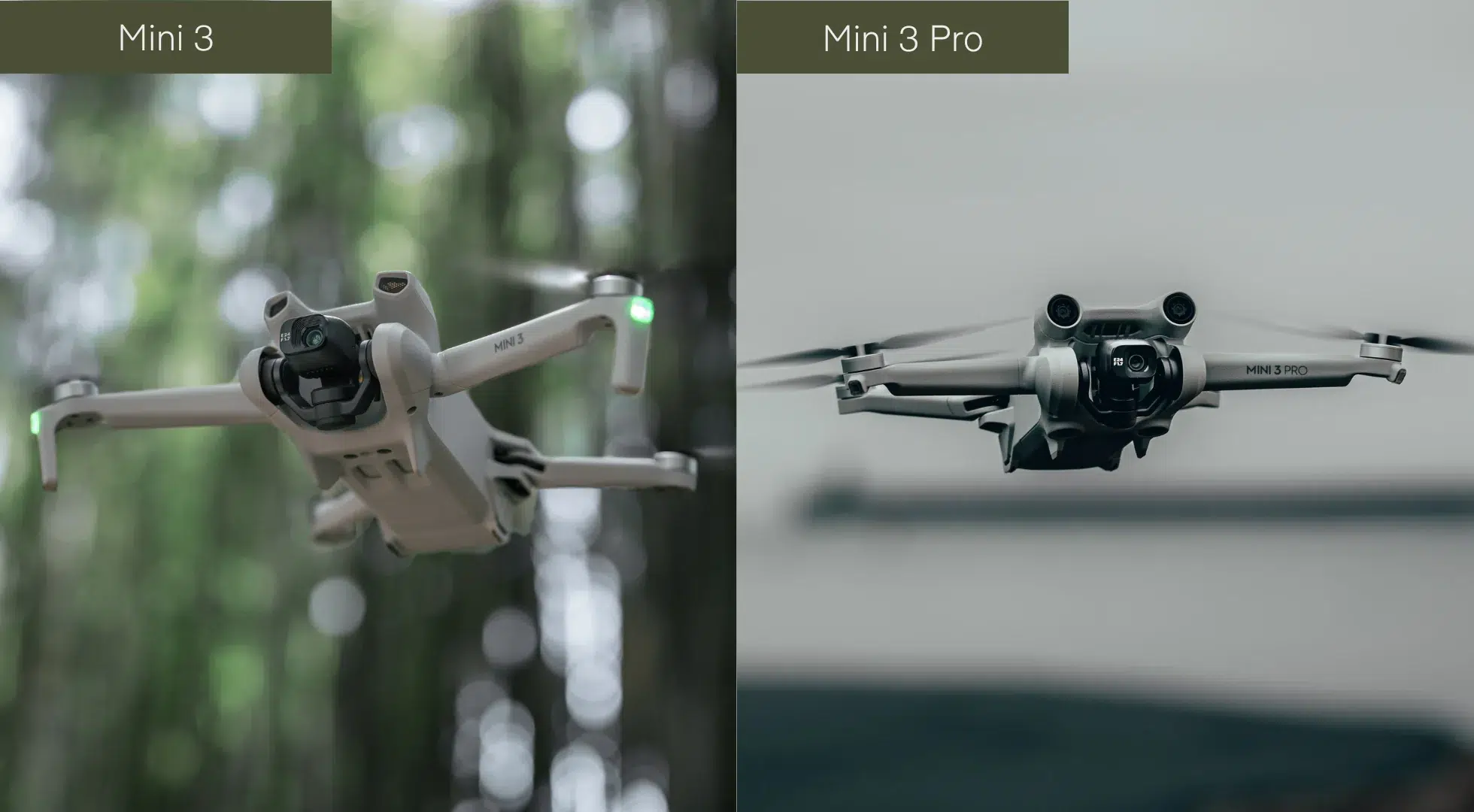
Conclusion and Recommendation
After spending considerable time with both the DJI Mini 3 Pro and the DJI Mini 3, it’s clear that each drone serves its purpose for different types of users and scenarios. The Mini 3 Pro, with its advanced camera capabilities, longer flight time, and additional features like obstacle avoidance, is a powerhouse suited for enthusiasts and content creators looking to get the most out of every flight. Its ability to capture stunning footage in a variety of conditions, combined with the extra control and safety features, make it a versatile tool in any drone pilot’s arsenal.
The Mini 3, on the other hand, stands out for its simplicity and ease of use, making it an excellent choice for beginners or those who prioritize convenience and portability. Its camera still delivers beautiful results in most conditions, and its flight performance is nothing to scoff at, providing a smooth and enjoyable experience.
My personal recommendation: Consider your needs and what you value most in a drone. If advanced features and the utmost in image quality are your priorities, the Mini 3 Pro is worth the investment. For those who prefer a more straightforward flying experience, or are just starting out, the Mini 3 offers great value and performance that will not disappoint.
Specifications Table
| Feature | DJI Mini 3 Pro | DJI Mini 3 |
| Weight | Under 250g | Under 250g |
| Sensor Size | 1/1.3″ | 1/2.3″ |
| Max Video Resolution | 4K/60fps | 4K/30fps |
| Max Flight Time | Up to 34 minutes | Up to 30 minutes |
| Obstacle Sensing | Yes | No |
| Wind Resistance | Level 5 | Level 5 |
| Transmission System | OcuSync 3.0 | OcuSync 2.0 |
| Aperture | Adjustable | Fixed |
| Focus Track | Yes | No |
| Max Range | 12km | 12km |

